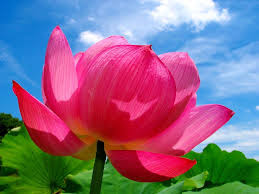CHAPTER 17 The Two Truths
(from "The Heart of the Buddha's Teaching" by Thich Nhat Hanh)
The followings are Thay's precious messages in this Chapter.
1. According to Buddhism, there are two kinds of truth.
(1) relative or worldly truth: (conventional truth) Four Noble Truths
We recognize the presence of happiness and the presence of suffering.
(2) absolute truth: (ultimate truth) Heart Sutra
We realize that suffering and happiness are "not two."
Although pain exists, joy also exists.
2. We enter the path of practice through the door of knowledge, perhaps from a Dharma talk or a book. We continue along the path, and our suffering lessens, little by little. But at some point, all of our concepts and ideas must yield to our actual experience.
3. Suffering is not objective. It depends largely on the way you perceive. There are things that cause you to suffer but do not cause others to suffer. There are things that bring you joy but do not bring others joy. The Four Noble Truths were presented by the Buddha as relative truth to help you enter the door of practice, but they are not his deepest teaching.
4. With the eyes of interbeing, we can always reconcile the Two Truths. When we see, comprehend, and touch the nature of interbeing, we see the Buddha. When the Buddha says, "The complete silencing is joy," he means that thinking, conceptualizing, and speaking have come to an end.
5. The Five Remembrances help us make friends with our fears of growing old, getting sick, being abandoned, and dying. They are also a bell of mindfulness that can help us appreciate deeply the wonders of life that are available here and now. But in the Heart Sutra, Avalokiteshvara teaches that there is no birth and no death. Why would the Buddha tell us that we are of the nature to die if there is no birth and no death? Because in the Five Remembrances, the Buddha is using the tool of relative truth. He is well aware that in terms of absolute truth, there is no birth and no death.
6. When we look at the ocean, we see that each wave has a beginning and an end. A wave can be compared with other waves, and we can call it more or less beautiful, higher or lower, longer lasting or less long lasting. But if we look more deeply, we see that a wave is made of water. While living the life of a wave, it also lives the life of water.
7. Liberation is the ability to go from the world of signs to the world of true nature. We need the relative world of the wave, but we also need to touch the water, the ground of our being, to have real peace and joy. Looking deeply into relative truth, we penetrate the absolute. Relative and absolute truths inter-embrace. Both truths, relative and absolute, have a value.
8. The Buddha recommends we live our daily life in this way, seeing everything in the light of interbeing. Then we will not be caught in our small self. What is essential is to be our best while we are here. Then we continue to be through our children and grandchildren. Motivated by love, we invest ourselves in the next generations.
9. Look into the self and discover that it is made only of non-self elements. A human being is made up of only non-human elements. To protect humans, we have to protect the non-human elements — the air, the water, the forest, the river, the mountains, and the animals.
10. The Fourth Noble Truth is the cessation of the causes of suffering. When we put an end to our suffering, we feel relative joy. But when all of our concepts of suffering and not suffering cease, we taste absolute joy.
11. In the dimension of relative truth, the Buddha passed away many years ago. But in the realm of absolute truth, we can take his hand and join him for walking meditation every day.
12. To enter the heart of the Buddha, use your Buddha eyes, which means your insight into interbeing. Approach the heart of the Buddha in the realm of absolute truth, and the Buddha will be there with you.
13. The Avatamsaka Sutra says that all dharmas (phenomena) enter one dharma, and one dharma enters all dharmas. If you go deeply into any one of the teachings of the Buddha, you will find all of the other teachings in it. The way out of your suffering depends on how you look into it.
14. These are the dialectics of the Diamond Sutra. "A is not A. That is why it is truly A."
15. Look deeply to try to overcome the gap between your concept of reality and reality itself. Meditation helps us remove concepts.
(Cf. ) http://compassion5151.blogspot.jp/2015/07/three-dimensions-1.html
Buddha















